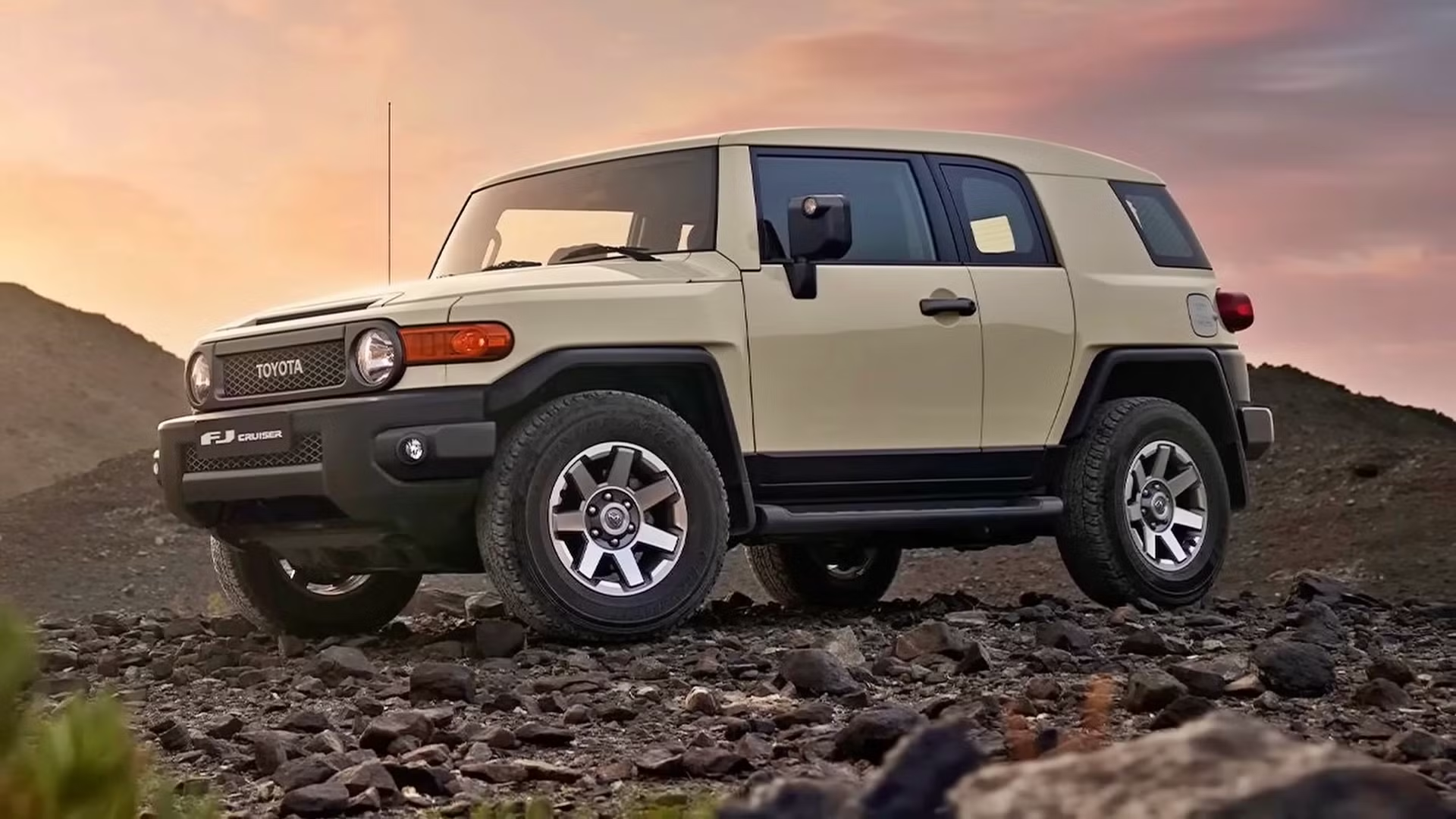Not all vehicles are built the same when it comes to visibility, and Subaru stands out as the leader in this area earning admiration from other manufacturers.
Unfortunately, some automakers prioritize design aesthetics over practical usability, disregarding the essential design principle that form should follow function.
Good visibility depends on several factors, including the size, height, and angle of the windows and roof pillars.
When these elements are poorly designed or overly obstructive, it becomes challenging to clearly see the surroundings whether it’s other vehicles, pedestrians, or cyclists.
Consumer Reports has already released a ranking of vehicles with both the best and worst visibility across different segments (excluding minivans and SUVs, where visibility variations are minimal).
This article focuses specifically on rear visibility, which tends to be a weak area in many contemporary car designs.
If you’re searching for a reliable used car with strong safety credentials, it’s best to avoid these five models known for poor rear visibility and dangerously large blind spots (and no, it’s not just sports coupes on the list we’ve included various types of vehicles).
1. Chevrolet Camaro
The Camaro is definitely not a good match for drivers who struggle with claustrophobia. The windshield and windows are notably small, and their sharp angles only add to the problem.
Even when using the side mirrors, it remains difficult to get a clear view of the surroundings particularly what’s happening behind the vehicle. Attention muscle car enthusiasts: The 2024 Chevrolet Camaro marks the final model year for the sixth generation of this iconic vehicle.
As it prepares to say farewell as a gas-powered two-door, a special Collector’s Edition is making its debut. Chevrolet has stated that this special edition is a tribute to the original first-generation Camaro’s code name, Panther.
The 2024 Camaro Collector’s Edition is expected to feature prominent badging on both the front and rear, along with references to this commemorative edition inside the vehicle. Special wheels may also be included to complete the package, which will be offered in the RS, SS, and 1LE models.
Additionally, the turbocharged four-cylinder engine that was once the base option is no longer available for 2024. This means that the Camaro lineup for this final year will only include the V-6 and various V-8 engine configurations.
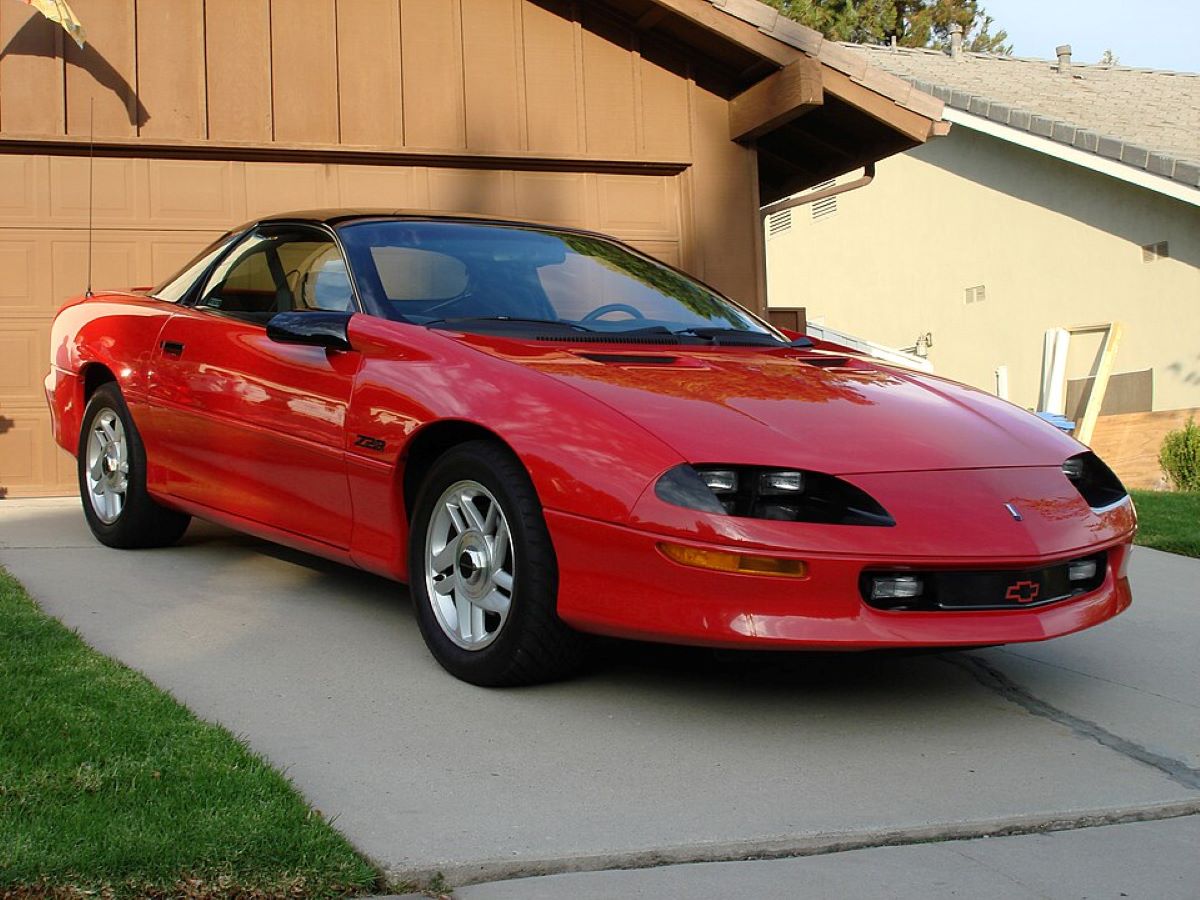
It’s going to be a tough goodbye for the 2024 Chevrolet Camaro, so we’re starting with a positive outlook. The handling across the entire rear-wheel-drive sports car lineup remains fantastic, which is a key factor.
It means you don’t have to opt for the 650-hp 1LE V-8 model to have a great time, whether you’re driving to work, heading to the grocery store, or maybe even participating in an autocross event.
We even appreciate the 10-speed automatic transmission’s tuning, which is a significant point since not everyone is interested in shifting gears themselves (though a manual option is still available).
Chevrolet successfully transformed this classic muscle car into an exceptional modern sports car, which is part of the reason we named it our 2016 Car of the Year.
Unfortunately, the 2024 Camaro has some practical drawbacks. There’s limited space inside the car—whether it’s for passengers or their belongings. Additionally, the convertible top isn’t the easiest to operate. For comparison, anyone who has driven a Mazda Miata knows just how simple that small convertible’s top is to handle.
Could these everyday inconveniences be part of the reason why the Camaro is being discontinued, while the Ford Mustang continues to evolve with new generations of two-door muscle cars? It’s a possibility.
Whatever the reason, we know we’ll miss the fun we’ve had with this now nine-year-old sixth-generation Camaro, at least until the nameplate returns—potentially as an all-electric four-door version.
The Camaro’s powertrain lineup has changed for 2024. All variants still come standard with rear-wheel drive (RWD) and a six-speed manual transmission, but the previous entry-level turbocharged inline four-cylinder engine has been discontinued. As a result, the base variants now come with the robust 3.6-liter V-6 engine.
This engine delivers a solid 335 horsepower and 284 lb-ft of torque, enabling a 0-60 mph time of 5.2-5.4 seconds, according to Chevrolet. Vehicles equipped with the automatic transmission see slightly better fuel economy, with figures ranging from 16-18 mpg in the city and 26-29 mpg on the highway for the V-6.
Of course, the V-8 engine is sure to tempt performance enthusiasts. The 6.2-liter V-8 produces 455 horsepower and 455 lb-ft of torque, and it’s the same engine found in the Corvette, Silverado, and Cadillac Escalade.
We’ve clocked a 2019 Camaro with this V-8 reaching 60 mph in just 4.1 seconds, and despite its powerful output, the fuel economy remains respectable, with estimates ranging from 16 mpg in the city to 24-26 mpg on the highway.
Also Read: Top 10 Family-Friendly 7-Seaters of 2025
2. Toyota FJ Cruiser
All of the FJ Cruiser’s pillars are oversized, which significantly hinders overall visibility, but it’s the rear pillars that present the biggest issue.
To make matters worse, Toyota mounted the spare tire on the liftgate, further obstructing the view out the back. Fortunately, the large side mirrors help compensate and make up for some of the rearward blind spots.
More than forty years after the original FJ40 Land Cruiser made its debut, Toyota teased the concept of a retro-styled, compact SUV with the 2003 Rugged Youth Utility. The concept was showcased at the North American International Auto Show in Detroit that year.
Much like the FJ40, the Rugged Youth Utility featured round headlights framing a rectangular grille, wraparound rear windows, a vertical windshield, and a contrasting white roof. The concept was an instant hit, with its minimal overhangs, rugged tires, and impressive ground clearance sparking excitement among off-road enthusiasts.
The public’s enthusiastic response to the concept led Toyota to develop it into a production vehicle, which was eventually named the FJ Cruiser. A production-ready version of the concept was unveiled two years later at the 2005 Chicago Auto Show, and the FJ Cruiser went on sale in 2007.
Built on the same platform as the contemporary 4Runner and Tacoma, the FJ Cruiser was taller and narrower than the 4Runner, with a shorter wheelbase designed for improved maneuverability and a steeper breakover angle.
Toyota manufactured the FJ Cruiser from 2007 to 2014 in the U.S., available in both 4×2 and 4×4 configurations. However, some international markets continued to sell the rugged small SUV until 2022.
Due to a decline in sales, attributed to the financial recession of the late 2000s and early 2010s, Toyota discontinued the FJ Cruiser in the U.S. in 2014, shifting its focus to popular hybrid models and highly profitable vehicles like the Tacoma and Tundra.
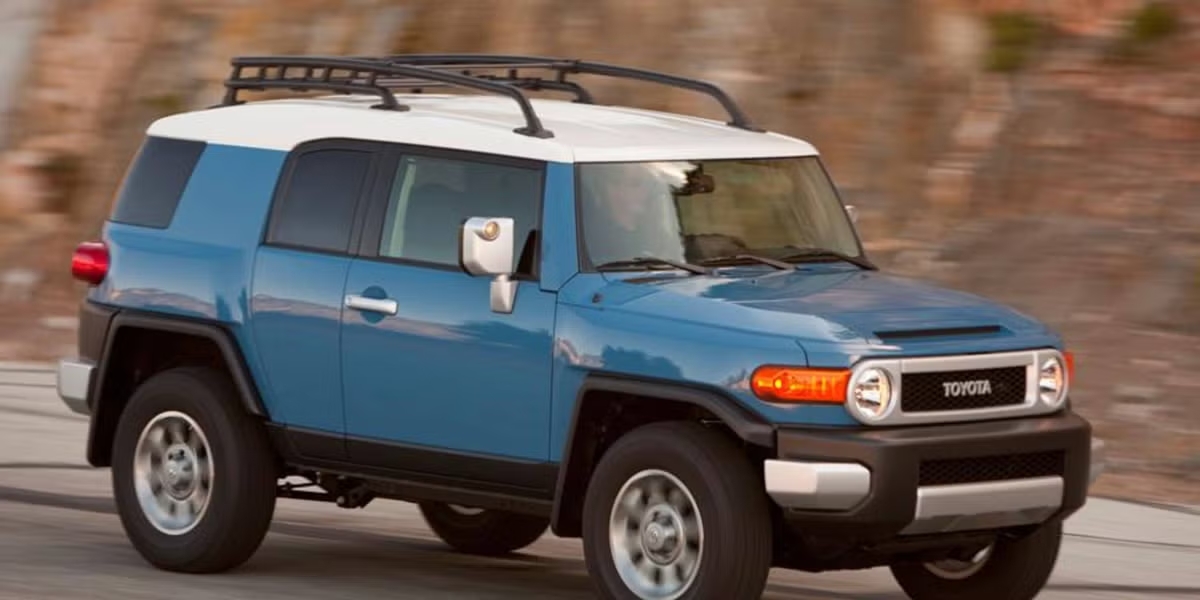
While the FJ Cruiser didn’t have a direct predecessor, its two-door, small-SUV layout drew inspiration from both the original Land Cruiser and the first-generation 4Runner.
Although Toyota hasn’t introduced a successor to the FJ Cruiser, the Compact Cruiser EV concept might hint at a new, all-electric, off-road crossover designed to compete with the Ford Bronco Sport, incorporating retro styling elements to appeal to those nostalgic for the old FJ.
Toyota’s 2007 lineup included vehicles such as the RAV4, Highlander, and the four-door 4Runner SUV, allowing the FJ Cruiser to be a bit more unconventional. The concept’s bold styling carried over faithfully to the production model, retaining features such as the swing-out rear cargo door and the innovative triple wipers for the flat windshield.
With a wheelbase that was 3.9 inches shorter and an overall length 5.3 inches shorter than the 4Runner, the FJ Cruiser sacrificed interior space for better off-road maneuverability.
Unlike its spiritual predecessors, such as the Jeep Wrangler, the FJ Cruiser featured a fixed roof. However, it offered a unique touch by including a pair of clamshell half-doors for easier access to the rear seats.
The FJ Cruiser featured five seats in two rows, with the dashboard and door panels adorned in glossy accents matching the exterior color, a nod to the sheetmetal-trimmed FJ40. The mostly flat dashboard had a vintage feel, especially when equipped with the optional altimeter, compass, and tilt dials in the center.
Chunky transmission and transfer case levers enhanced the FJ’s mechanical appeal, while the cargo area included integrated tie-downs and “diamond plate” plastic trim for increased utility and durability.
The body-on-frame FJ Cruiser shared much of its mechanical foundation with the contemporary Tacoma and 4Runner. The sole engine option was Toyota’s 4.0-liter 1GR V-6, which produced 239 horsepower and 278 lb-ft of torque on premium fuel.
In later years, the engine output increased to 260 horsepower and 271 lb-ft of torque on regular fuel, thanks to the addition of variable valve timing. A five-speed automatic transmission was standard, while models with part-time four-wheel drive and a low-range transfer case were available with an optional six-speed manual transmission.
3. Kia Stinger
The Stinger is a sporty sedan that delivers solid performance and an enjoyable driving experience, but it falls short when it comes to rear visibility.
The rear window is quite narrow, and three large headrests obstruct the view even when they’re adjusted to their lowest setting. The situation becomes even more problematic in winter, when the lack of a rear wiper on the tailgate becomes especially noticeable.
If you’re in the market for a large, thrilling coupe that can whisk you away in style and speed after a long workweek, the Kia Stinger GT should be on your radar.
While it may not carry the prestigious badge of upscale saloons like the Audi A5 Sportback or VW Arteon, the Kia Stinger GT’s design sets it apart from these models, making it feel as unique as a baby tiger in a shelter. Even in its base form, it stands out as one of the sportiest saloons available.
That bold style continues inside, where the Stinger GT features one of the most refined Kia interiors to date. With flowing lines, a leather-wrapped dashboard, and subtle accents of silver plastic, the cabin exudes a premium feel.
Everything is user-friendly, with all models offering wireless phone charging and a responsive 8.0-inch touchscreen infotainment system with built-in sat-nav.
Although the Stinger is packed with features, space isn’t its strong suit. The rear seats offer decent support, but the footroom under the front seats is limited, and taller passengers may find the headroom a bit tight.

The boot is also relatively shallow, so while it can fit a family’s holiday luggage, you’ll want to consider alternatives like the Audi A5 Sportback or VW Arteon if you need to carry bulkier items.
Where the Kia Stinger GT truly shines is in its driving dynamics. Despite its size, it feels nimble on twisty roads, giving you a sense of agility and plenty of grip that the Arteon can’t quite match. It’s a car that will put a smile on your face, offering a driving experience that’s both engaging and thrilling.
When you dial back the pace, the Stinger transforms into a smooth, comfortable cruiser, especially in Blue Edition and GTS models, which come equipped with adaptive suspension for a more refined ride.
Though it’s a bit louder at highway speeds compared to the A5 or Arteon, the Stinger comes with plenty of tech to ensure your safety. Despite its larger size, it’s easy to drive in city traffic, thanks to light steering and the standard 360-degree birds-eye camera, which makes parking much less stressful.
If your driving is mostly around town, the 2.0-liter petrol engine is the ideal choice for its quiet, smooth performance with a touch of power.
For long motorway trips, the 2.2-liter diesel offers excellent fuel efficiency. Meanwhile, the range-topping 3.3-liter petrol V6 takes the Stinger to a whole new level of speed and performance, transforming it into a genuinely fast car.
This variety of powertrains makes the Stinger a strong alternative to the A5 Sportback and VW Arteon. It comes loaded with standard features, minimal optional extras, a seven-year warranty, and a sense of fun that its German counterparts just can’t match.
Also Read: Top 10 Worst and 10 Best Trucks for Towing
4. Mercedes-Benz CLA
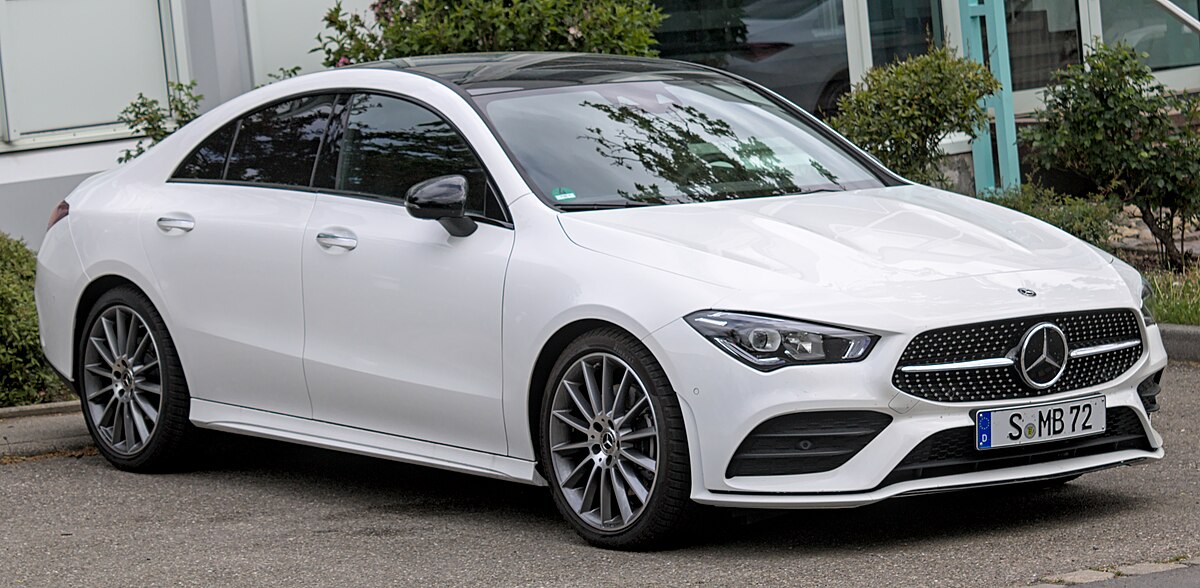
This compact luxury car, styled with coupe-like lines, suffers from rear visibility so poor that it might make you second-guess your purchase. The roof pillars are exceptionally wide, and the long, sloping rear window is noticeably lacking in height.
The entry-level Mercedes-Benz CLA may not sit at the top of the luxury brand’s lineup, but the all-new 2026 model is a significant player in its own right.
As the most affordable way into the Mercedes family, this subcompact sedan has a lot to prove, making a strong first impression crucial for gaining a lifelong Mercedes customer.
At the same time, it must embody the brand’s reputation for luxury, both in image and execution. The third-generation CLA carries even more weight, as it marks the beginning of Mercedes’ next wave of electric vehicles.
It is also the first vehicle built on the new Mercedes Modular Architecture (MMA), designed for both fully electric vehicles and hybrids with internal combustion engines. This dual approach addresses the current consumer hesitation towards fully electric vehicles, making it an important model for the transition period.
Additionally, the CLA introduces Mercedes-Benz’s new operating system, a key step toward the future of software-defined vehicles that will be easily upgradable through over-the-air updates.
The 2026 Mercedes-Benz CLA250+ with EQ Technology debuts globally in Rome and will be followed by the CLA hybrid, both built on the front-wheel-drive-based MMA platform. Mercedes will showcase the design language of its next-generation rear-drive vehicles at the Munich auto show in September, with these models set to roll out in 2026.
The 2026 CLA250+ and CLA350 4Matic EVs will launch in Europe this summer, arriving in the U.S. in the fall. The hybrid version will follow, launching in Europe by the end of 2025 and in North America in 2026. The North American models will be manufactured in Germany.
The CLA is the first of four models to emerge from the MMA platform. A wagon version will also be available, but it’s reserved for the European market.
Upcoming models include the next-generation GLA-Class, a sporty subcompact SUV with two rows and five seats, and the larger GLB-Class, a three-row, seven-passenger SUV. The rollout schedule for the SUVs is still to be determined.
The naming convention has been updated. The EQ label, which was originally used to emphasize the electric nature of the vehicles, is being dropped. Mercedes’ electric vehicles have now reached a level of maturity where the EQ distinction is no longer necessary.
The new generation of EVs will retain their traditional names, with the electric CLA being referred to as the “CLA with EQ Technology.” The updated G-Wagen was the first model to adopt this naming strategy, with the G580 leading the way.
The development of the CLA and its underlying platform began around three and a half years ago. The main objective was to create the ideal electric sedan, featuring a coupe-like roofline that still offers sufficient rear-seat space.
While designed primarily as an electric vehicle, the platform had to accommodate an internal combustion engine as well. The front-wheel-drive (FWD) architecture will support a front-drive hybrid version, with the option of a 4Matic all-wheel-drive, alongside a rear-drive electric vehicle, as the motor is positioned on the rear axle.
While the company is seeing an increasing demand for EVs and will continue to launch electric models on dedicated platforms, it also recognizes the need to maintain internal combustion engine (ICE) versions with updated engines and transmissions well into the 2030s.
This dual strategy required the creation of new architectures, and MMA was specifically designed to accommodate both powertrains.
5. Nissan Murano
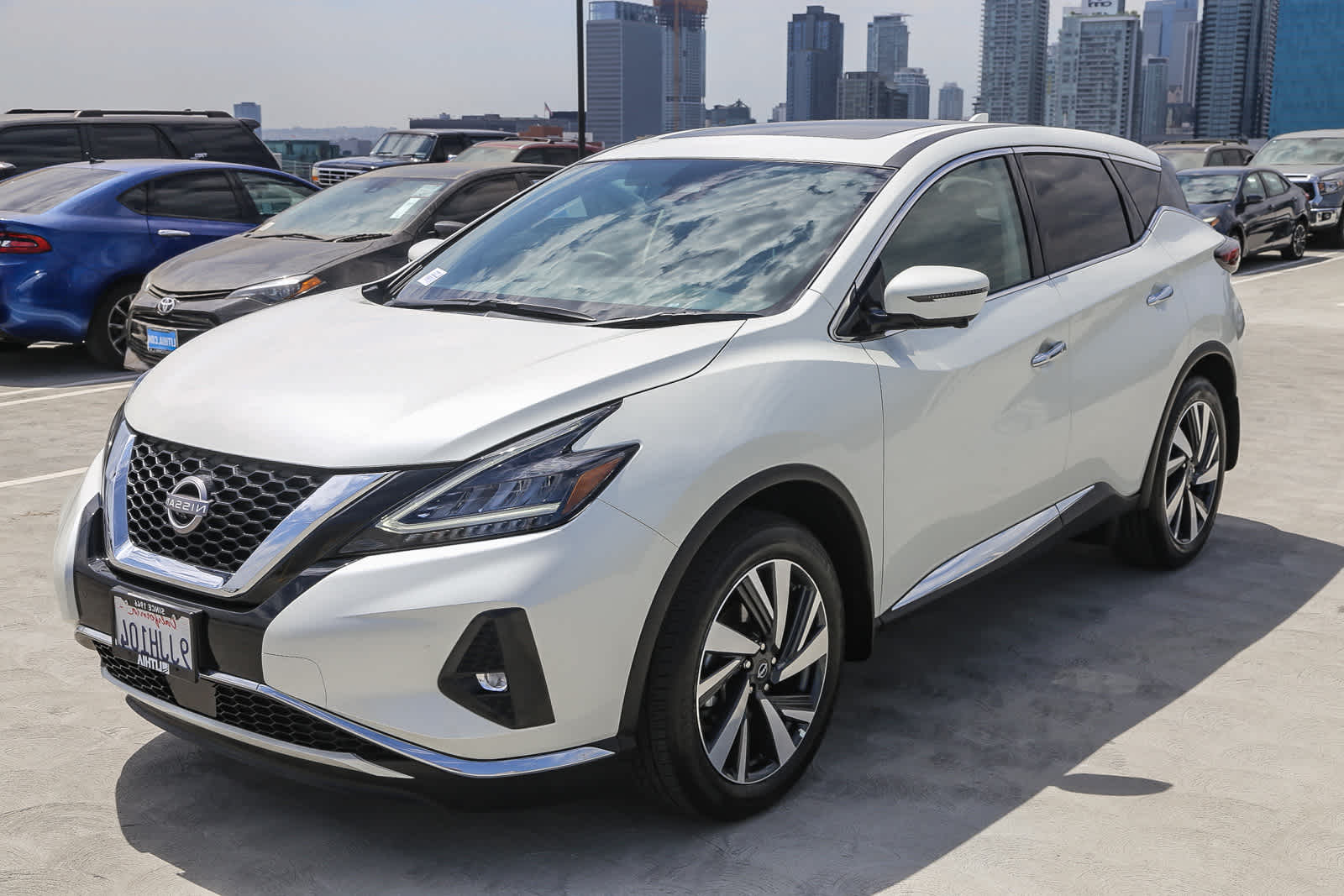
The current model of the Murano has been in production since 2015, and it appears that the designers prioritized style over visibility from the very start. Out of all the SUVs available today, this one offers the most average if not disappointing rear view.
The original Nissan Murano made a bold statement in the SUV market when it was launched in 2003, breaking away from conventional SUV design. However, in recent years, this mid-size crossover has been overshadowed by more contemporary competitors.
With the 2025 model, Nissan has revitalized the Murano, giving it a fresh and modern design for its fourth generation. The updated styling surpasses that of the outgoing model, featuring a sleek rear quarter window and a swept-back roofline, drawing comparisons to the luxury-class Genesis GV70 crossover.
Under the hood, the previous V-6 engine is replaced with a turbocharged 2.0-liter four-cylinder engine, and Nissan has retired the continuously variable automatic transmission (CVT) in favor of a more conventional nine-speed automatic.
The 2025 Murano retains its two-row, five-seat configuration, and there is speculation that a version of this model will be released under Nissan’s Infiniti luxury brand, likely named QX65, offering more upscale features and a higher-end interior.
The 2025 Nissan Murano ranks #9 among the best mid-size two-row SUVs, priced starting at $41,860, with the higher trims reaching up to $50,990. The 2025 Murano is entirely new, replacing the V-6 engine and CVT with a turbocharged 2.0-liter four-cylinder engine and a nine-speed automatic transmission. Of the SV, SL, and Platinum trims, the mid-range SL is the most recommended.
It offers desirable features such as heated exterior mirrors, a panoramic sunroof, tinted windows, memory settings for the driver’s seat, a 10-speaker Bose stereo, in-dash navigation, an auto-dimming rear-view mirror, an integrated garage door opener, a 360-degree exterior camera system, and ambient interior lighting.
All Murano models are powered by a turbocharged 2.0-liter four-cylinder engine producing 241 horsepower. A nine-speed automatic transmission is standard, along with front-wheel drive.
All-wheel drive is available on the SV trim as an option and comes standard on the SL and Platinum trims. During our initial test drive of the 2025 Murano, we noticed significant improvements in handling compared to the previous model, with more precise steering and a solid, planted feel.
While the combination of the turbo-four engine and nine-speed automatic transmission is not overtly sporty, it is responsive, and we find it a more favorable choice over the CVT used in earlier models. We estimate the 2025 Murano will accelerate from 0 to 60 mph in about 8.0 to 8.3 seconds, and we will update this section with actual results once we test the vehicle ourselves.
The Murano’s towing capacity is modest, rated at 1,500 pounds, significantly lower than that of rivals like the Honda Passport and Hyundai Santa Fe, which offer higher towing capabilities.
The EPA estimates the Murano’s fuel economy to be the same for both front-wheel and all-wheel-drive versions, rated at 23 mpg in the city and 24 mpg on the highway.
Once we have the opportunity to test the Murano on our highway fuel economy route, we will update this section with real-world results. For more details about the Murano’s fuel economy, please refer to the EPA’s website.
Inside, the Murano offers a comfortable two-row cabin, with styling elements inspired by the electric Nissan Ariya crossover. A color-shifting, textured dashboard trim adds a touch of visual appeal, while a touch-sensitive panel integrated into a wood trim piece controls the climate settings. Platinum trim models come with luxury features such as semi-aniline leather upholstery and massaging front seats.
Both the front and rear seats feature Nissan’s Zero Gravity design, providing superior comfort for long drives, as experienced in other models. All Murano models come equipped with a power liftgate for easy access to the cargo area, which offers a generous 33 cubic feet of space with the rear seats up and 64 cubic feet when the seats are folded down.
The Murano’s interior features two 12.3-inch color displays for infotainment and the gauge cluster. Nissan’s Google-based infotainment software is available on higher trim levels. All trims include wireless Apple CarPlay and Android Auto, while SL and Platinum trims come with in-dash navigation powered by Google Maps.
Standard features across all models include active noise cancellation, a wireless smartphone charging pad, SiriusXM satellite radio, four USB-C ports, and a six-speaker stereo. SL and Platinum trims also offer a 10-speaker Bose stereo system, Amazon’s Alexa voice assistant, and an in-car Wi-Fi hotspot.
The Murano comes equipped with a comprehensive suite of driver-assistance technologies as standard across all trims, including lane-keeping assist, adaptive cruise control, and blind-spot monitoring.
The SL and Platinum trims feature a more advanced version of Nissan’s ProPilot hands-free driving technology, which uses navigation data to slightly reduce the vehicle’s speed in preparation for upcoming curves.
Key safety features include standard automated emergency braking with pedestrian detection, standard lane-departure warning with lane-keeping assist, and standard adaptive cruise control with a hands-free driving mode.
The Murano’s standard warranty package does not stand out compared to its competitors. Rivals in this segment, such as the Hyundai Santa Fe and Kia Sorento, offer longer roadside assistance programs and a non-transferable 10-year or 100,000-mile powertrain warranty.
Here’s a breakdown of the Murano’s coverage: a limited warranty covers 3 years or 36,000 miles, the powertrain warranty covers 5 years or 60,000 miles, and complimentary maintenance is provided for 2 years or 24,000 miles.

